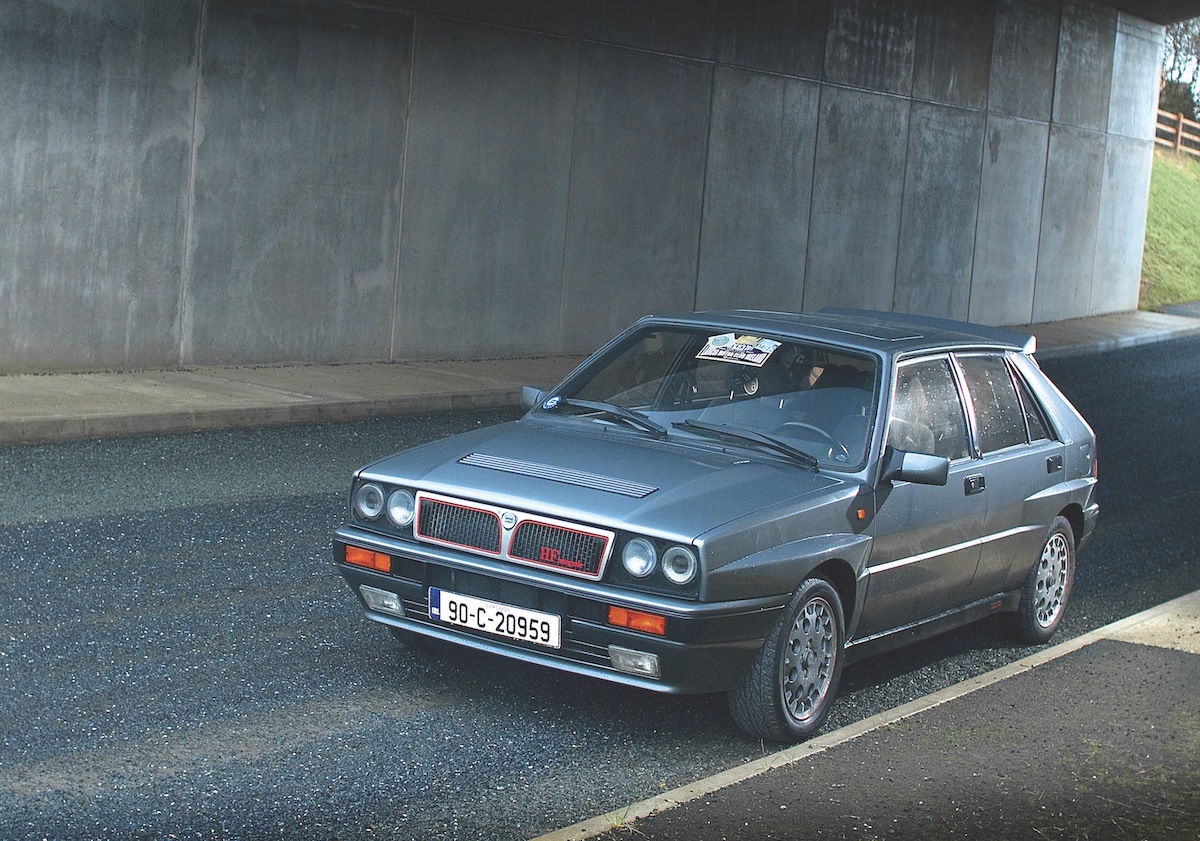Fancy getting your hands on one of the most iconic rally-bred performance cars of all time? Don’t go shopping for one until you read our handy guide!
Words and photos by Andrew Pollock
This article ran in issue 5 of Retro Classics Magazine in 2012; all information was correct at time of going to press.
It’s hard to believe now, but the Lancia Delta has been with us since 1979. Penned by the legendary Giorgetto Giugiaro at a time when sharp-edged origami styling was all the rage, the front-drive Delta was based on the underpinnings of the well-proven Fiat Ritmo and went on to be a very capable, practical and popular family hatch in many world markets; however, those models aren’t the reason that the Delta has become a revered legend for performance car enthusiasts. With an eye keenly placed on Group A rallying following the demise of Group B, Lancia introduced the HF 4WD in 1986, a Delta equipped with a turbocharged and intercooled two-litre eight-valve engine that sent its 165bhp to the road via a clever torque-sensing 4×4 system. Slingshot acceleration and limpet-like road holding were the result, with 60mph being reached in a mere 7.9 seconds. This was supercar stuff in the mid eighties, and by the time the improved HF Integrale 8v came along in 1988 the Delta was making serious inroads into world rallying; the upshot would be that Lancia would win the Constructors’ World Rally Championship an unparalleled six times in a row between 1987 and 1991, as well as four driver championships in that time for Juha Kankkunen and Miki Biasion. The Integrale, while mechanically very similar to the HF 4WD, was a more focused competition machine with larger wheels and arches, a bigger turbocharger and intercooler and more efficient engine cooling measures on the bodywork. Power was now up to 185bhp, but this was soon to increase further with the introduction of the 16v version a year later, boasting almost 200 ponies as well as longer-travel suspension, larger wheels and even more muscular bodywork.
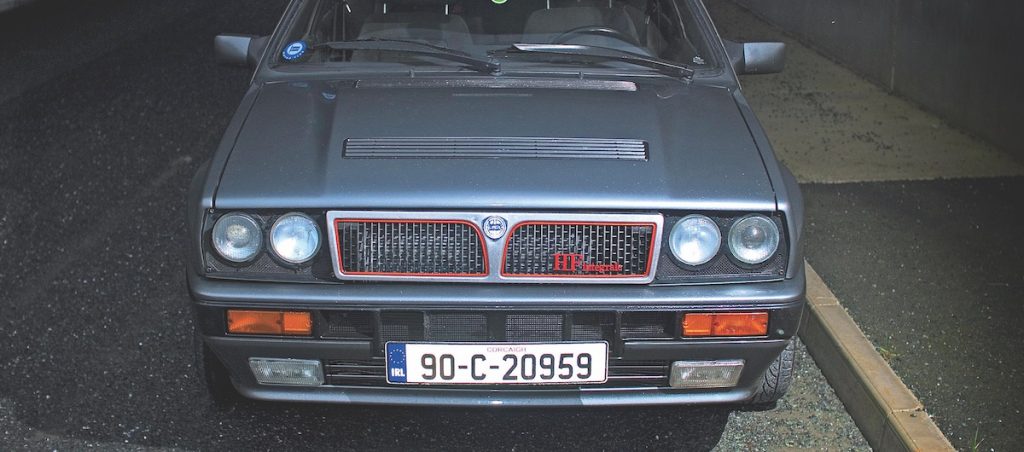
This could well have been the ultimate incarnation of the Delta were it not for a further revamp for 1991, made to maintain the car’s dominance of world rallying; logically enough christened the ‘Evolution’, this saw a whole new raft of worthwhile, functional improvements made over the outgoing Integrale 16v including a wider front and rear track, Brembo four-pot front brakes, braced longer-travel suspension, heavy-duty rose-jointed anti-roll bars, standard ABS and new sixteen-inch wheels on five-stud hubs. Power was up to 205bhp, and externally the Evolution looked even more aggressive than its predecessors with huge wheelarches, a bulged bonnet and more cooling strakes than you could shake a stick at, with little vents even being squeezed between the headlamps. An adjustable spoiler over the rear window allowed fine-tuning of the rear-end downforce at high speed, while air-conditioning and leather trim were available to keep you in the lap of luxury as you tore furrows into the surface of your favourite local backroad. In 1993 the almighty dominance of the Delta had eventually waned in the face of newer models, with the launch of an Evolution II representing an effort to wring another few victories from the new aging machine. A power increase to 215bhp combined with more sophisticated engine management and emissions gear, a smaller and more responsive turbo, a rear strut brace, optional seventeen-inch wheels and a mild revamp of the interior.
Although still undoubtedly a massively capable performance car, much revered by the motoring press despite its aging styling, the Delta Integrale ceased production in 1995, bringing down the curtain on one of the most legendary rally-bred road cars the world will ever see. Despite the issues that you’d imagine would arise with an old and complex Italian car, as well as the fact that it was only ever produced in left-hand drive, the Integrale has remained a popular choice with car enthusiasts to this day, with a passionate worldwide support network out there to assist the budding owner in their quest to own the best. If you fancy owning a piece of rallying history yourself, turn the page to avoid the main pitfalls…
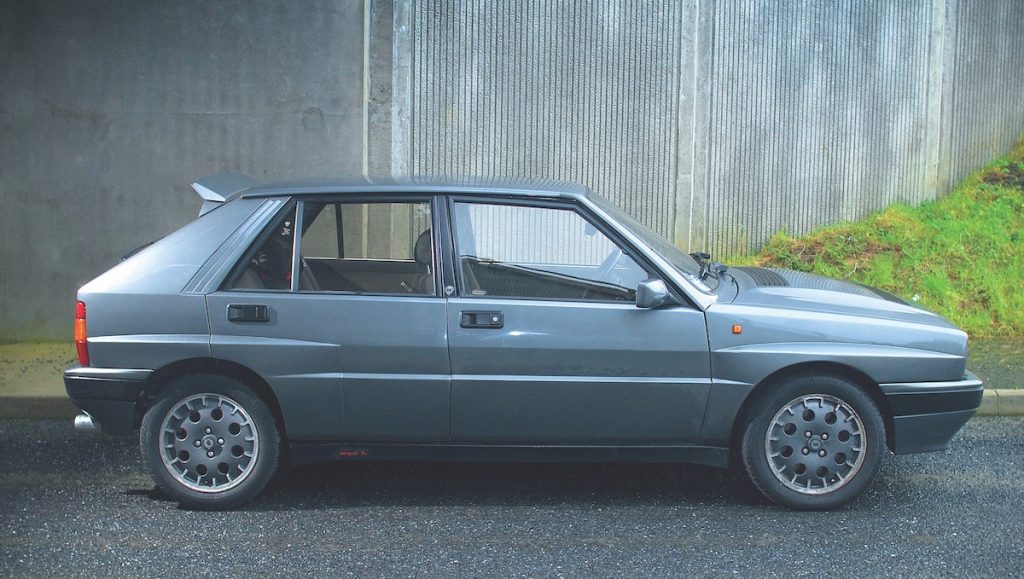
BODYWORK
While the bodywork is reasonably tough, most bodywork issues centre on minimal (and sometimes nonexistent) rust prevention on early cars in a production run, due mainly to the pressures of building sufficient early numbers to properly homologate the car for motorsport use. Rust can affect many places, but badly-repaired accident damage is also a concern and worth looking out for.
Front windscreen: The drain holes at the bottom corners block and rot out. Also there is a panel join where the roof panel meets the A-pillars, which needs to be checked.
Rear roof edge: Three panels join at this point, and are spot-welded together then sealed; this sealant breaks down and allows water ingress.
Sills: These are especially a problem on German-market cars, where they use urea salt to keep roads ice free during the winters. Regardless of where the car is from, make sure that all drain holes are clear and open and that the plastic sill mouldings aren’t hiding scabby sills beneath.
Front valance: The area where the front arch meets the front panel gets sandblasted by pebbles and road grit over the years, especially at the right-hand side beneath the battery.
Rear quarter panels: The sunroof drains inside the rear quarter panels, which is fine until the panel drains block with road dirt, rusting from the inside out. Also check around the rear panel, rear wheel arches and suspension turrets,
Stress cracks: These are a deal breaker, affecting chassis at the top, middle and bottom of the front door aperture, particularly at lower windscreen level. These cracks are caused by chassis flex due to the weight of the engine and transmission hanging at the front of the car, exacerbated by the fitment of hard suspension.
Sunroof: Check around the sunroof aperture for wrinkles or signs of creasing, and the sunroof panel itself for rust bubbles.
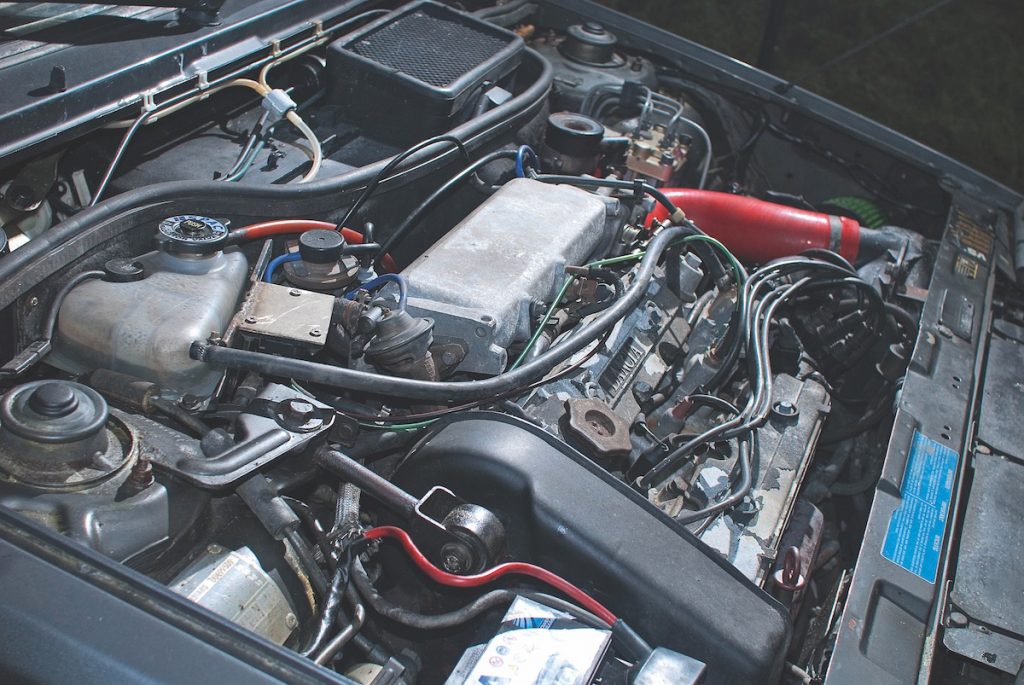
ENGINE
The Integrale was equipped with one basic engine throughout its life, the famous Lampredi-designed twin-cam unit shared with the Lancia Thema. Featuring a cast iron block with balancer shafts, an eight-valve cylinder head (evolving to a sixteen-valve head from the end of 1989), Weber fuel/ignition management, a turbocharger, an air-to-air intercooler, computer-controlled boost and a thermostatically-controlled oil cooler, these engines are almost bulletproof and will generally withstand a lot of abuse, but not neglect! Unleaded fuel doesn’t pose any problems to the unit. Timing belt kit changes at 50,000km, 10,000km lubrication services and 20,000km full services all combine to make an 8-valve Integrale a relatively straightforward proposition to take reasonable care of, with well cared-for examples known to do 300,000km without major problems. The 16-valve engines have the same basic level of mechanical reliability, but ignore timing belt changes at your peril; Lancia quoted 60,000km, but few, if any, made it beyond 30,000km. Timing belt changes are absolutely critical to the 16v; do not exceed 20,000km or two years of driving, and a full kit of tensioners and guide bearings should be fitted, as it is a false economy to neglect the bearings.
Valve guides: Bronze valve guides are used on both 8v and 16v heads. Be aware that a tappety-sounding engine could have the correct valve clearances but worn valve guides, which create the same noise.
Oil level: A well-sorted Integrale can create nearly 2g in hard cornering, so the sump oil level is critical to the mechanical well-being of the engine. The pickup feed from the sump to the crank-driven oil pump is situated at the very right of the engine and, despite the well-baffled sump, on a long right-hand corner the remaining sump oil will head towards the gearbox side of the engine, starving the pickup of oil; number four conrod and bearing then suffer oil starvation. Camshaft wear issues can also arise from this situation.
Oil & fuel consumption: All Integrale engines burn oil. Expect consumption of 500ml per 1,000km; hard-driven examples will burn up to twice as much. There is no excuse for not checking all levels each time you fill with fuel, which will be often! Expect around 28mpg for a gently-driven example, or 20mpg for a 16v. Heavily-modified cars can returning MPG in single figures…
Boost issues: A car suffering from a lack of boost may be cured by replacing the many small-bore vacuum hoses with a suitable silicone replacement; a fiddly but straightforward task that will greatly benefit the overall running of the engine.
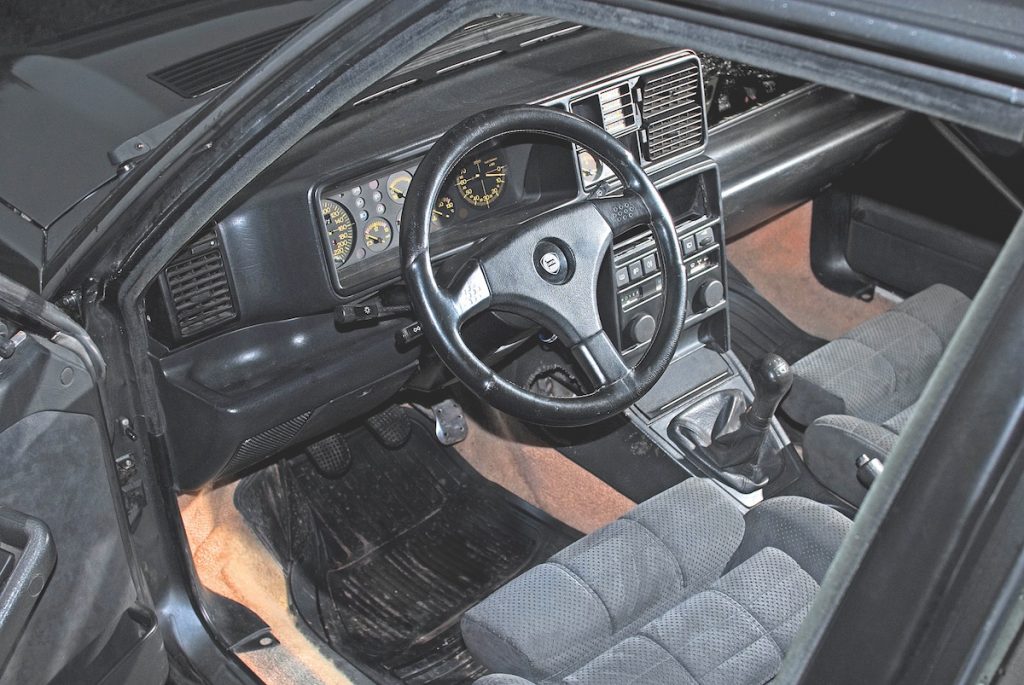
INTERIOR
Integrale interiors (Recaro) are mostly in grey alcantara suede, with models later than 16v cars having the option of leather and a darker, all-grey suede cloth. Evos also had leather trim.
Seats: While reasonably hard wearing, driver’s seats suffer wear to bolsters and seat backs. The usual solution is to buy a spare rear seat and use the trim from this to make a repair.
Headlining: Sagging head-linings on sunroof-equipped cars can be easily fixed.
Door rattles: Door panel clips are still available to help secure and solve annoying rattles from these trims.
Floor mats: When fitting overmats, it should be noted that the floorpan is different between Kat and non-Kat cars, so the mats will be different also (Kat denotes Swiss and German market cars with extra emissions equipment, fitted with 8v heads instead of 16v in all cases).
Plastic trim: Kick panel and sill plastic trims are fragile at best, and should be carefully tightened after work to prevent cracking.
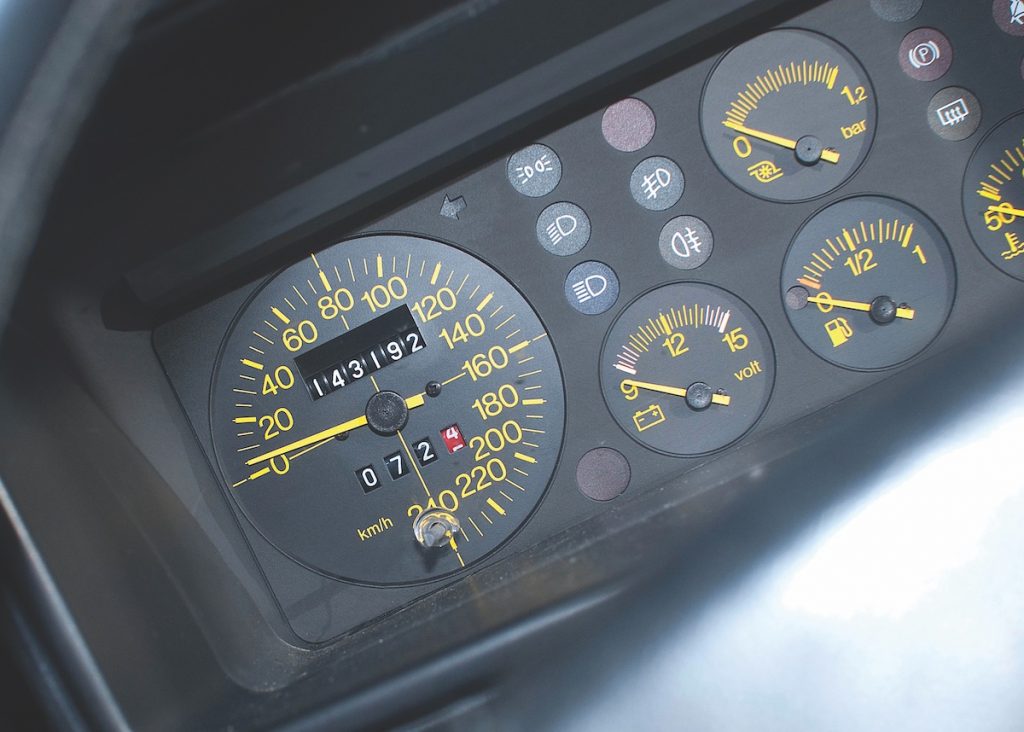
Transmission: The Integrale’s transverse gearbox is generally a long-lasting unit, with internals shared with the Ferrari-engined Thema 8.32. Oil changes and level are critical; all cars are equipped with a gearbox oil level dipstick, which should be checked on level ground while cold. The gearbox should be whine-free and slick in operation. The car has three differentials, with a torque-splitting diff within the gearbox splitting the drive from front to rear. The clutch is a dry single-plate, operated by a pull cable up to 16v, and a push-type hydraulic system thereafter. When test driving, make sure that the clutch does not slip under load as it is a day’s work and probably close to €1,000 of labour to replace. A graunchy gearbox action may be cured by a simple gear oil change and the use of a gear oil additive; suspect that the gearbox oil level has been run low at some stage in the past. Sloppy gear stick action is usually as a result of bush wear, and can be fixed reasonably easily. Rear axle whine can occur on high mileage examples, but may be cured by a gear oil change topped to the correct level. Driveshafts are generally trouble-free, but all of the many CV joints should be checked for grease as part of any maintenance regime. A ‘ping’ from beneath the car when taking up drive is usually the rear driveshaft CV joint running dry; a greasing should cure this. While greasing you may notice that there may be a small amount of gear oil in this, which is not of concern as a tiny amount of gear oil may make its way out through the diff flange nut in operation.
Suspension: The Delta uses a Macpherson strut arrangement front and rear with conventional coil springs, front lower wishbones and swing-link rear suspension. As the Delta evolved the suspension gained longer travel and heavier-duty struts and balljoints. The final Evolution II cars are strut-braced front and rear. Swinging arms and links are rubber bush-mounted to the body. Most cars at this stage are on a replacement set of shocks, and many owners will have gone with harder units such as Koni adjustables; this has knock-on effects for the bodyshell, which needs to be carefully examined for signs of stress cracks. Polyurethane suspension bush upgrade kits are a popular upgrade, aiding immensely the handling and cutting slop from the suspension. Wheel alignment is critical, and worn suspension bushes or shocks, soft springs and chassis alignment problems can all be highlighted by a session at a four-wheel alignment centre; well worth the €50 cost. Balljoints are no longer supplied by Lancia and may be difficult to source. Integrale balljoints are the same for 8v and 16v, and Evo joints will fit the Integrale but not the other way around.
Brakes: These cars boast a four-disc servo-assisted, diagonally-split braking system, with a pressure limiter fitted to the rear axle. A cable-operated handbrake operates on the rear calipers. Later 16v cars had four-channel ABS as an extra-cost option, becoming standard on Evo versions. The system is reasonably trouble and maintenance-free, although hard-driven cars have been known to warp discs; these are freely available, however. Most cars have had brake hoses replaced at this stage too, and it’s always a good idea to upgrade to braided hoses and new brake fluids at the same time. Brake calipers live a hard life, and most cars would benefit from a rebuild; again, seal kits and reconditioned units are available. Handbrakes were never very effective, even when these cars were new, so a twenty-year-old Integrale would probably benefit from a new cable and rebuilt rear calipers. That said, most handbrakes are over adjusted, so its always a good idea to slacken off the handbrake occasionally, drive for a few days and readjust to no less than four clicks; this gives the calipers a chance to free out to get the self-adjusting system working again.
Electrics: The Integrale uses a twelve-volt negative earth electrical system, and contrary to popular opinion this is reasonably reliable, with any problem areas usually well documented. Most electrical faults stem from a poor earthing system, which uses clip-on earth connectors. Engine earths are located behind both headlamps, while the interior earth is beneath the dash on the right-hand side, bolted to the chassis leg, tailgate and next to the left-hand rear lamp. Repair is simple, as you cut off the spade connectors, fit eyelet connectors (solder if you wish) and bolt the earths to the chassis; no more faulty electrics! Ignore the dash-mounted voltmeter. So long as it reads twelve volts occasionally, everything is fine! On a car with charging problems, before condemning the alternator all wiring should be checked as it has been known for alternator wiring to harden and break, include ignition switch connectors. When checking for any electrical irregularities, check all switchgear for functionality. Air conditioning operation may be erratic or non-existent, and some Japanese-spec cars had aftermarket air-con systems fitted which now suffer from a lack of suitable repair parts.
Clubs
In Ireland, the club to talk to is the Lancia Motor Club of Ireland, which boasts a number of Integrales in its ranks as well as plenty of advice and information; find them at www.lanciaireland.com.
Buying
While it is possible to pick up a cheap Integrale for small money, it should be remembered that it is cheap for a reason, and unless you intend to spend all of your time off underneath the car instead of driving it you would be better off setting your sights higher. Try to buy the best you can find and afford, as it will be worth the investment in the long run. A quick online search highlights a few cars for sale in Ireland, and several across the UK and Europe. When importing be aware of VRT bills, which could make your eyes water! As with all cars, research the exact model you are going to buy; online forums, owners’ clubs and Google are your friends in this regard! If you find a car you want to take a look at, take along someone you trust to act as a voice of reason. It is worth the cost to get an AA inspection of any car, and actively enquire about any history. Due to their relative rarity, most cars will be well known. Despite their age some of these cars are still blisteringly quick, with the 16v hitting sixty miles per hour in less than six seconds, although don’t dismiss the 8v as inferior, as it is easier to maintain and is still a very fast motor car indeed. Having test driven a decent Integrale any prospective buyer should come back full of enthusiasm and will struggle to keep cash in pocket. Try to rein in your enthusiasm and haggle a few Euro off the asking price, as any Integrale will require some level of work to make right. Also consider carefully your purchase, as a twenty-year-old turbo car is going to cost some money to run and maintain. Be more wary of modified cars at hard suspension can cause chassis and bodyshell problems, and do your homework, as there are no easy jobs on an Integrale!
Additional information by Andrew Mulqueen.


